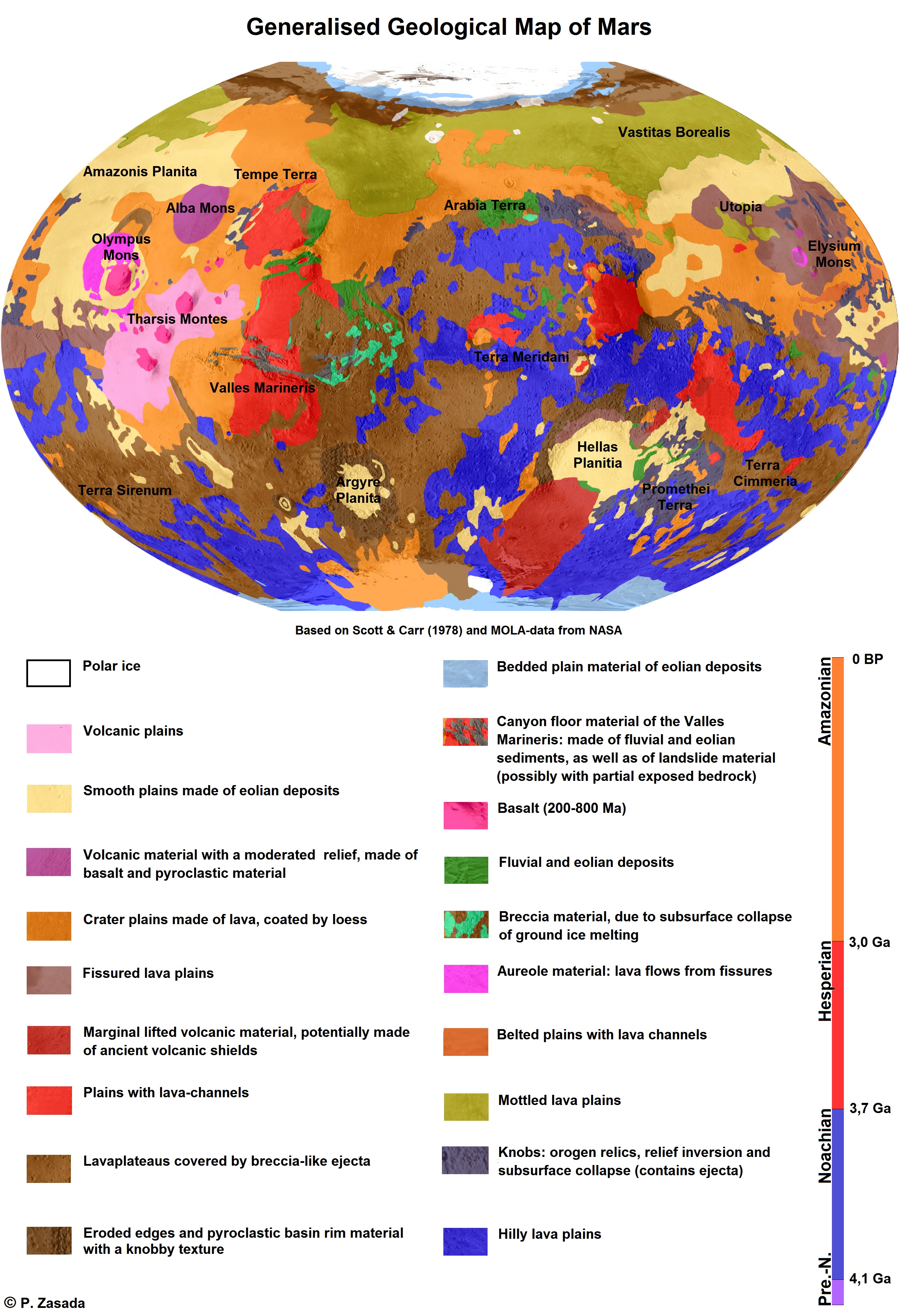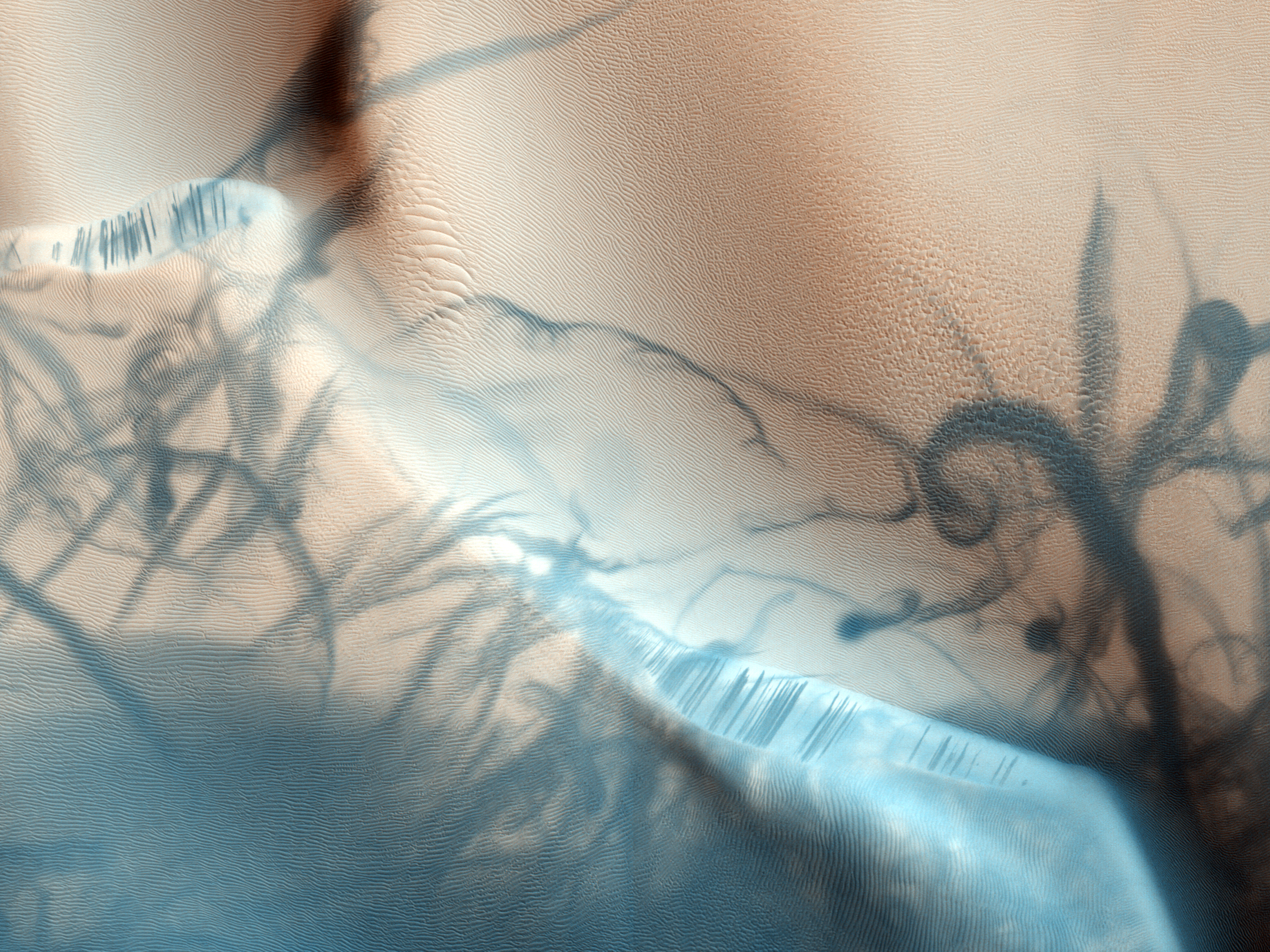|
Simud Valles
The Simud Valles are an ancient outflow channel system in the Oxia Palus quadrangle of Mars, located at 19.8° N and 37.8° W. They are 945 km long and were named for the word for "Mars" in Sumerian. Note: Descriptor term changed to the plural (valles), and coordinates redefined 3/31/2008. See also * Geology of Mars * HiRISE * Outflow channels Outflow channels are extremely long, wide swathes of scoured ground on Mars. They extend many hundreds of kilometers in length and are typically greater than one kilometer in width. They are thought to have been carved by huge outburst floods. ... References Further reading * * Valleys and canyons on Mars Oxia Palus quadrangle {{mars-stub ... [...More Info...] [...Related Items...] OR: [Wikipedia] [Google] [Baidu] |
Outflow Channel
Outflow channels are extremely long, wide swathes of scoured ground on Mars. They extend many hundreds of kilometers in length and are typically greater than one kilometer in width. They are thought to have been carved by huge outburst floods. Crater counts indicate that most of the channels were cut since the early Hesperian, though the age of the features is variable between different regions of Mars. Some outflow channels in the Amazonis and Elysium Planitiae regions have yielded ages of only tens of million years, extremely young by the standards of Martian topographic features. The largest, Kasei Vallis, is around long, greater than wide and exceeds in depth cut into the surrounding plains. The outflow channels contrast with the Martian channel features known as " valley networks", which much more closely resemble the dendritic planform more typical of terrestrial river drainage basins. Outflow channels tend to be named after the names for Mars in various ancient w ... [...More Info...] [...Related Items...] OR: [Wikipedia] [Google] [Baidu] |
Oxia Palus Quadrangle
The Oxia Palus quadrangle is one of a series of 30 quadrangle maps of Mars used by the United States Geological Survey (USGS) Astrogeology Research Program. The Oxia Palus quadrangle is also referred to as MC-11 (Mars Chart-11). The quadrangle covers the region of 0° to 45° west longitude and 0° to 30° north latitude on Mars. This quadrangle contains parts of many regions: Chryse Planitia, Arabia Terra, Xanthe Terra, Margaritifer Terra, Meridiani Planum and Oxia Planum. Mars Pathfinder landed in the Oxia Palus quadrangle at , on July 4, 1997, at the intersection Tiu Valles and Ares Vallis. Many craters within Oxia Palus are named after famous scientists. Besides Galilei and da Vinci, some of the people who discovered the atom and radiation are honored there: Curie, Becquerel, and Rutherford. Mawrth Vallis was strongly considered as a landing site for NASA's ''Curiosity'' rover, the Mars Science Laboratory. It made it to at least the top two sites for NASA's ... [...More Info...] [...Related Items...] OR: [Wikipedia] [Google] [Baidu] |
Mars
Mars is the fourth planet from the Sun and the second-smallest planet in the Solar System, only being larger than Mercury. In the English language, Mars is named for the Roman god of war. Mars is a terrestrial planet with a thin atmosphere (less than 1% that of Earth's), and has a crust primarily composed of elements similar to Earth's crust, as well as a core made of iron and nickel. Mars has surface features such as impact craters, valleys, dunes and polar ice caps. It has two small and irregularly shaped moons, Phobos and Deimos. Some of the most notable surface features on Mars include Olympus Mons, the largest volcano and highest known mountain in the Solar System and Valles Marineris, one of the largest canyons in the Solar System. The Borealis basin in the Northern Hemisphere covers approximately 40% of the planet and may be a large impact feature. Days and seasons on Mars are comparable to those of Earth, as the planets have a similar rotation period a ... [...More Info...] [...Related Items...] OR: [Wikipedia] [Google] [Baidu] |
Astrogeology Research Program
The Astrogeology Science Center is the entity within the United States Geological Survey concerned with the study of planetary geology and planetary cartography. It is housed in the Shoemaker Building in Flagstaff, Arizona. The Center was established in 1963 by Eugene Merle Shoemaker to provide lunar geologic mapping and to assist in training astronauts destined for the Moon as part of the Apollo program. Since its inception, the Astrogeology Science Center has participated in processing and analyzing data from various missions to the planetary bodies in the Solar System, assisting in finding potential landing sites for exploration vehicles, mapping our neighboring planets and their moons, and conducting research to better understand the origins, evolutions, and geologic processes operating on these bodies. The Early Days Gene Shoemaker founded the Astrogeology Research Program August 25, 1960. The research program started out as the ''Astrogeologic Studies Group'' at the U ... [...More Info...] [...Related Items...] OR: [Wikipedia] [Google] [Baidu] |
United States Geological Survey
The United States Geological Survey (USGS), formerly simply known as the Geological Survey, is a scientific agency of the United States government. The scientists of the USGS study the landscape of the United States, its natural resources, and the natural hazards that threaten it. The organization's work spans the disciplines of biology, geography, geology, and hydrology. The USGS is a fact-finding research organization with no regulatory responsibility. The agency was founded on March 3, 1879. The USGS is a bureau of the United States Department of the Interior; it is that department's sole scientific agency. The USGS employs approximately 8,670 people and is headquartered in Reston, Virginia. The USGS also has major offices near Lakewood, Colorado, at the Denver Federal Center, and Menlo Park, California. The current motto of the USGS, in use since August 1997, is "science for a changing world". The agency's previous slogan, adopted on the occasion of its hundredth an ... [...More Info...] [...Related Items...] OR: [Wikipedia] [Google] [Baidu] |
Geology Of Mars
The geology of Mars is the scientific study of the surface, crust, and interior of the planet Mars. It emphasizes the composition, structure, history, and physical processes that shape the planet. It is analogous to the field of terrestrial geology. In planetary science, the term ''geology'' is used in its broadest sense to mean the study of the solid parts of planets and moons. The term incorporates aspects of geophysics, geochemistry, mineralogy, geodesy, and cartography. A neologism, areology, from the Greek word ''Arēs'' (Mars), sometimes appears as a synonym for Mars's geology in the popular media and works of science fiction (e.g. Kim Stanley Robinson, Kim Stanley Robinson's Mars trilogy). The term areology is also used by the Areological Society. Geological map of Mars (2014) File:Geologic Map of Mars figure2.pdf, Figure 2 for the geologic map of Mars Global Martian topography and large-scale features Composition of Mars Mars is a terrestrial planet, which ... [...More Info...] [...Related Items...] OR: [Wikipedia] [Google] [Baidu] |
HiRISE
High Resolution Imaging Science Experiment is a camera on board the ''Mars Reconnaissance Orbiter'' which has been orbiting and studying Mars since 2006. The 65 kg (143 lb), US$40 million instrument was built under the direction of the University of Arizona's Lunar and Planetary Laboratory by Ball Aerospace & Technologies Corp. It consists of a 0.5m (19.7 in) aperture reflecting telescope, the largest so far of any deep space mission, which allows it to take pictures of Mars with resolutions of 0.3m/pixel (1ft/pixel), resolving objects below a meter across. HiRISE has imaged Mars exploration rovers on the surface, including the ''Opportunity'' rover and the ongoing ''Curiosity'' mission. History In the late 1980s, of Ball Aerospace & Technologies began planning the kind of high-resolution imaging needed to support sample return and surface exploration of Mars. In early 2001 he teamed up with Alfred McEwen of the University of Arizona to propose such ... [...More Info...] [...Related Items...] OR: [Wikipedia] [Google] [Baidu] |
Outflow Channels
Outflow channels are extremely long, wide swathes of scoured ground on Mars. They extend many hundreds of kilometers in length and are typically greater than one kilometer in width. They are thought to have been carved by huge outburst floods. Crater counts indicate that most of the channels were cut since the early Hesperian, though the age of the features is variable between different regions of Mars. Some outflow channels in the Amazonis and Elysium Planitiae regions have yielded ages of only tens of million years, extremely young by the standards of Martian topographic features. The largest, Kasei Vallis, is around long, greater than wide and exceeds in depth cut into the surrounding plains. The outflow channels contrast with the Martian channel features known as " valley networks", which much more closely resemble the dendritic planform more typical of terrestrial river drainage basins. Outflow channels tend to be named after the names for Mars in various ancient wo ... [...More Info...] [...Related Items...] OR: [Wikipedia] [Google] [Baidu] |
University Of Arizona Press
The University of Arizona Press, a publishing house founded in 1959 as a department of the University of Arizona, is a nonprofit publisher of scholarly and regional books. As a delegate of the University of Arizona to the larger world, the Press publishes the work of scholars wherever they may be, concentrating upon scholarship that reflects the special strengths of the University of Arizona, Arizona State University, and Northern Arizona University. The Press publishes about fifty books annually and has some 1,400 books in print. These include scholarly titles in American Indian studies, anthropology, archaeology, environmental studies, geography, Chicano studies, history, Latin American studies, and the space sciences. The UA Press has award-winning books in more than 30 subject areas. The UA Press also publishes general interest books on Arizona and the Southwest borderlands. In addition, the Press publishes books of personal essays, such as Nancy Mairs's ''Plaintext'' and t ... [...More Info...] [...Related Items...] OR: [Wikipedia] [Google] [Baidu] |
Cambridge University Press
Cambridge University Press is the university press of the University of Cambridge. Granted letters patent by Henry VIII of England, King Henry VIII in 1534, it is the oldest university press in the world. It is also the King's Printer. Cambridge University Press is a department of the University of Cambridge and is both an academic and educational publisher. It became part of Cambridge University Press & Assessment, following a merger with Cambridge Assessment in 2021. With a global sales presence, publishing hubs, and offices in more than 40 Country, countries, it publishes over 50,000 titles by authors from over 100 countries. Its publishing includes more than 380 academic journals, monographs, reference works, school and university textbooks, and English language teaching and learning publications. It also publishes Bibles, runs a bookshop in Cambridge, sells through Amazon, and has a conference venues business in Cambridge at the Pitt Building and the Sir Geoffrey Cass Spo ... [...More Info...] [...Related Items...] OR: [Wikipedia] [Google] [Baidu] |
Valleys And Canyons On Mars
A valley is an elongated low area often running between hills or mountains, which will typically contain a river or stream running from one end to the other. Most valleys are formed by erosion of the land surface by rivers or streams over a very long period. Some valleys are formed through erosion by glacial ice. These glaciers may remain present in valleys in high mountains or polar areas. At lower latitudes and altitudes, these glacially formed valleys may have been created or enlarged during ice ages but now are ice-free and occupied by streams or rivers. In desert areas, valleys may be entirely dry or carry a watercourse only rarely. In areas of limestone bedrock, dry valleys may also result from drainage now taking place underground rather than at the surface. Rift valleys arise principally from earth movements, rather than erosion. Many different types of valleys are described by geographers, using terms that may be global in use or else applied only locally. ... [...More Info...] [...Related Items...] OR: [Wikipedia] [Google] [Baidu] |





